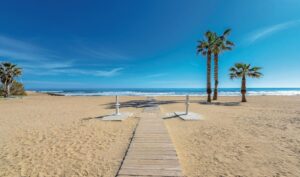7.4million Brits plan to travel exclusively within the UK in 2021, according to study

Following a year of disrupted travel plans, 7.4million Brits (11%) plan to travel exclusively within the UK next year, according to new research.
According to the latest study from UK holiday and holiday home specialists Park Holidays, a further third (31%) say they plan to do more domestic travelling in the next year – Covid-19 restrictions permitting.
As well as examining the nation’s travel plans for 2021, Park Holidays’ also tested their map reading skills and found despite 2020 being the year of the staycation, it seems the nation’s knowledge of UK landmarks and tourist hotspots still leaves a lot to be desired.
A mere 15% of Brits could confidently identify all major UK towns/cities and the top ten tourist landmarks on a map, without prompts.
Just over a third (35%) believe their knowledge of UK geography is good, while 50% said it was just ‘OK’ or ‘not good’. Men (41%) are more confident in their ability to identify UK cities and landmarks on a map than women (29%).
According to data from Statista, the most visited UK city for Brits holidaying at home is London. Perhaps unsurprisingly, findings from Park Holidays’ research revealed that the most-visited UK landmarks over the course of a lifetime are also in London; Big Ben (64%), Tower Bridge (59%) and the Tower of London (56%).
Northern landmarks, Blackpool Tower (51%) and Edinburgh Castle (43%) make up the top five.
|
UK Landmark |
% of UK Adults Who Have Visited In Their Lifetime |
|
Big Ben |
64% |
|
Tower Bridge |
59% |
|
Tower of London |
56% |
|
Blackpool Tower |
51% |
|
Edinburgh Castle |
43% |
|
Blackpool Pleasure Beach |
41% |
|
The Lake District National Park |
40% |
|
Cliffs of Dover |
39% |
|
Stone Henge |
37% |
|
Brighton Palace Pier |
37% |
More residents from Belfast (83%), Bristol (67%), Cardiff (75%), Norwich (65%), Nottingham (57%) and Southampton (72%), have visited Big Ben, than the landmarks within their own cities.
In Glasgow, more residents (92%) have visited Edinburgh Castle, than those living within the Scottish capital itself (72%).




